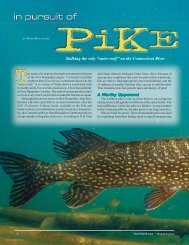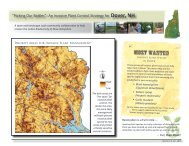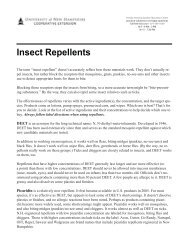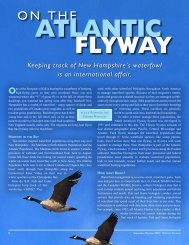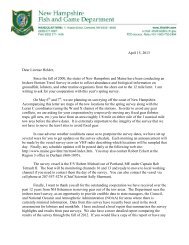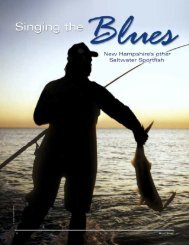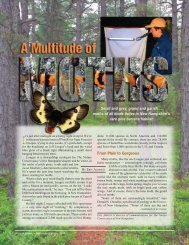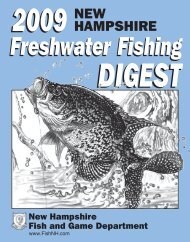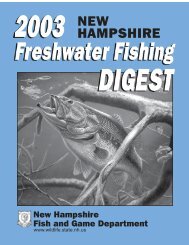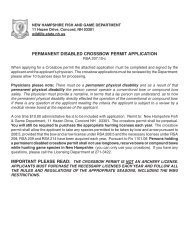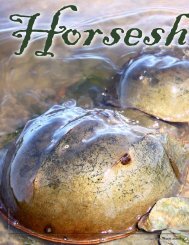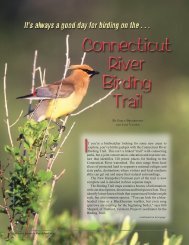Cod Spawning Protection Area - New Hampshire Fish and Game ...
Cod Spawning Protection Area - New Hampshire Fish and Game ...
Cod Spawning Protection Area - New Hampshire Fish and Game ...
- No tags were found...
You also want an ePaper? Increase the reach of your titles
YUMPU automatically turns print PDFs into web optimized ePapers that Google loves.
Shellfish <strong>Area</strong>sN.H. Coast Shellfish Open/Closed <strong>Area</strong>sGreenl<strong>and</strong>North HamptonRyeEelPondRyeHarbor1AThe CoastThe Coastal Conservation Association of <strong>New</strong> <strong>Hampshire</strong>’sGreat Bay Oyster ShellRecycling ProjectSupported by the Orvis Co.95TaylorRiverHamptonFallsHamptonFalls RiverBrownsRiverHunts IslCreekB&M1101Hampton R.HamptonMill CreekSeabrookBeachBlackwaterSeabrook River286MASSACHUSETTS27Tide MillCreekHamptonHarborHamptonBeach111LittleRiverChapelBrookATLANTICOCEANCLOSEDOPENHistoric ReefCurrent Reef3-ac Shell <strong>Area</strong>Great Bay has lost 90% of its oyster reefs fromtheir abundant historical levels. Oysters oncefiltered all the water of Great Bay every few days;now it takes months!Help us get the shell it takesto restore these reefs <strong>and</strong> our oysters.Visit www.ccanh.org or call 603.770.3201Proper Clam Digging Techniques1. Select <strong>and</strong> cut a manageable section offlat on four sides.3. Turn the piece of flat completely over <strong>and</strong>place it in the resulting furrow. (Placing thepiece to one side may needlessly cover anundug area with small clams vulnerable tosmothering.)5. With fork tines straight downward, gentlybreak up the section of flat to expose theremaining clams.2. Try to judge the location <strong>and</strong> depth of mostclams of suitable size. Work fork into theflat with gentle rocking motion, adjustingangle of fork to move between <strong>and</strong> underthe clam burrows.4. Pick out the exposed clams that are ofsuitable size.6. When all harvestable clams have beentaken from the piece, simply leave it as it liesin the furrow. This protects the remainingclams from predators such as crabs <strong>and</strong>gulls. Clams not harvested with graduallyreturn to an upright feeding position.www.<strong>Fish</strong>NH.com 25



